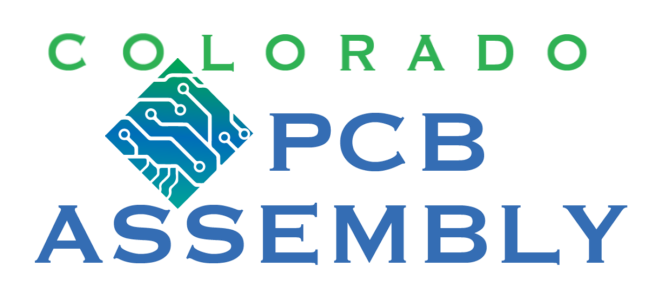Inspection Process
for Low Volume Prototype PCB Assemblies
The inspection process for low-volume prototype PCB (Printed Circuit Board) assemblies is a critical step to ensure the quality and functionality of the assembled boards. While low-volume production may not require the same level of automation as high-volume manufacturing, thorough inspection remains essential. Here’s an overview of the inspection process for low-volume prototype PCB assemblies:

- Visual Inspection:
- Component Placement: We begin with a visual inspection of component placement. We verify that all components are correctly oriented, aligned, and properly seated in their designated positions.
- Solder Joints: We examine the solder joints on both SMT (Surface Mount Technology) and through-hole components. We look for signs of incomplete soldering, solder bridges, and solder balls. We ensure that solder fillets are uniform and conform to industry standards.
- Polarity and Orientation: We check for correct component polarity and orientation, especially for components like diodes, electrolytic capacitors, and ICs. Incorrect orientation can lead to electrical issues.
- Component Placement: We begin with a visual inspection of component placement. We verify that all components are correctly oriented, aligned, and properly seated in their designated positions.
- Solder Joints: We examine the solder joints on both SMT (Surface Mount Technology) and through-hole components. We look for signs of incomplete soldering, solder bridges, and solder balls. We ensure that solder fillets are uniform and conform to industry standards.
- Polarity and Orientation: We check for correct component polarity and orientation, especially for components like diodes, electrolytic capacitors, and ICs. Incorrect orientation can lead to electrical issues.
- Automated Optical Inspection (AOI):
- If available and feasible for low-volume production, we consider using AOI equipment. AOI machines use cameras and software to automatically inspect PCBs for defects, such as misaligned components or soldering issues. This technology can significantly speed up the inspection process while improving accuracy.
- If available and feasible for low-volume production, we consider using AOI equipment. AOI machines use cameras and software to automatically inspect PCBs for defects, such as misaligned components or soldering issues. This technology can significantly speed up the inspection process while improving accuracy.


- In-Circuit Testing (ICT):
- While ICT is more commonly associated with larger production runs, it can still be valuable for low-volume prototypes with complex circuits. ICT verifies the functionality of individual components, connections, and circuit paths by applying test signals to the PCB.
- ICT can identify issues like open circuits, short circuits, and component failures. Custom test fixtures may be needed for low-volume or unique PCBs.
- While ICT is more commonly associated with larger production runs, it can still be valuable for low-volume prototypes with complex circuits. ICT verifies the functionality of individual components, connections, and circuit paths by applying test signals to the PCB.
- ICT can identify issues like open circuits, short circuits, and component failures. Custom test fixtures may be needed for low-volume or unique PCBs.
- Functional Testing:
- Functional testing involves applying power and signals to the PCB to verify that it operates as intended. It assesses the overall functionality of the assembly, including the performance of specific features or functions.
- Functional testing is especially crucial for prototype PCBs where proper operation is paramount.
- Functional testing involves applying power and signals to the PCB to verify that it operates as intended. It assesses the overall functionality of the assembly, including the performance of specific features or functions.
- Functional testing is especially crucial for prototype PCBs where proper operation is paramount.


- Boundary Scan Testing:
- Boundary scan testing is a method for verifying interconnections and debugging complex PCBs. It can be particularly useful for prototypes with FPGA (Field-Programmable Gate Array) or other programmable devices.
- Boundary scan testing is a method for verifying interconnections and debugging complex PCBs. It can be particularly useful for prototypes with FPGA (Field-Programmable Gate Array) or other programmable devices.
- Environmental Testing (if applicable):
- Depending on the application, we may need to subject the prototype PCB assembly to environmental tests, such as temperature cycling, humidity testing, or vibration testing. These tests assess how the PCB performs under specific conditions and can reveal potential reliability issues.
- Depending on the application, we may need to subject the prototype PCB assembly to environmental tests, such as temperature cycling, humidity testing, or vibration testing. These tests assess how the PCB performs under specific conditions and can reveal potential reliability issues.


- Quality Control Documentation:
- We maintain comprehensive records of the inspection process, including photographs, test results, and any issues identified. This documentation helps in troubleshooting and making necessary improvements.
- We maintain comprehensive records of the inspection process, including photographs, test results, and any issues identified. This documentation helps in troubleshooting and making necessary improvements.
- Feedback and Iteration:
- In the case of prototype assemblies, the inspection process often leads to valuable feedback for design and manufacturing improvements. Any issues detected should be addressed, and necessary changes made to the PCB design before moving forward with further iterations or larger production runs.
- In the case of prototype assemblies, the inspection process often leads to valuable feedback for design and manufacturing improvements. Any issues detected should be addressed, and necessary changes made to the PCB design before moving forward with further iterations or larger production runs.


